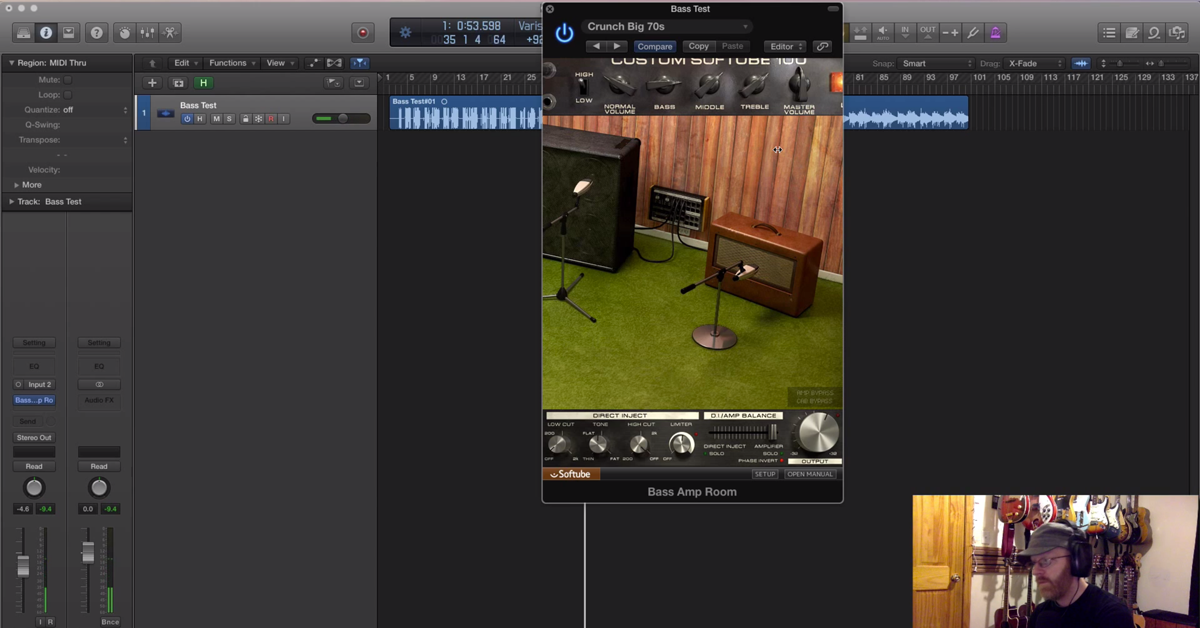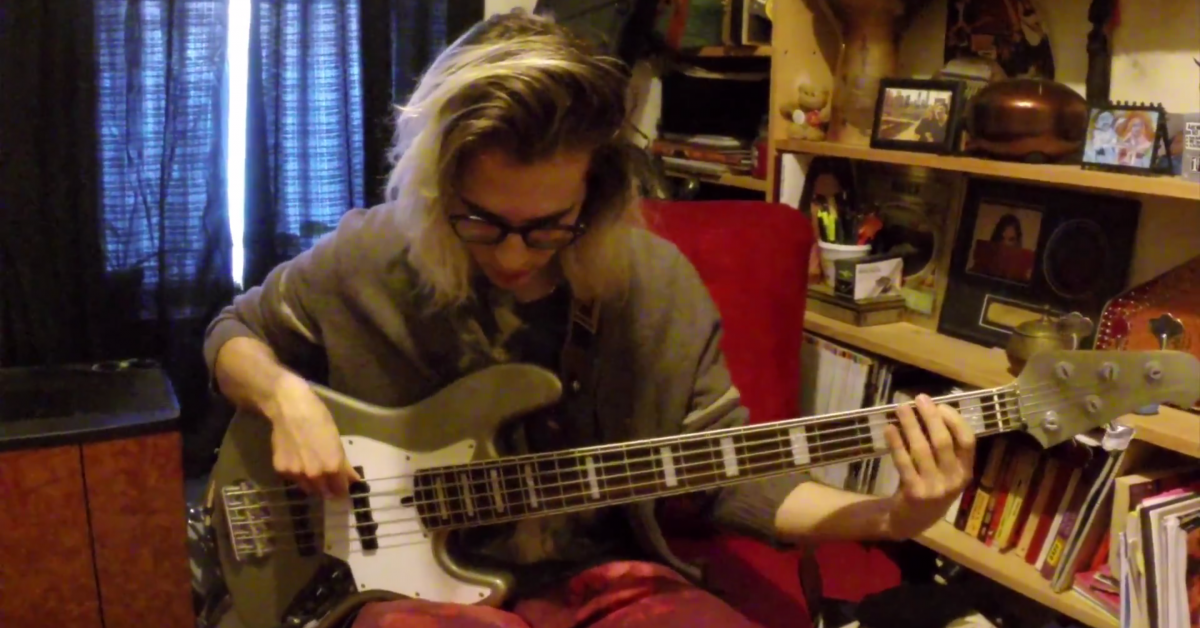Getting Overdriven Bass w/ Softube Amp Room + Real Amp and Pedal
Today, I’m going to talk about getting some overdriven bass tones using Softubes Bass Amp sim, and a real amplifier that has a bass overdrive pedal in line.
Now, I really like overdriven bass sounds. Particularly some of those tones that were on the Beatles White Album, and the Goodbye, Cream record, from Jack Bruce playing bass… I really like these sounds, and I find that with the right amount of overdrive, it just warms up the mix, and sometimes you don’t even hear how overdriven it is. It just adds a sustain and girth to the track.
This could be a little tricky, because if you have just too much fuzz on one signal, then it kind of can sound a little like you lose attack on it. So, what I did, and you’re going to hear in these examples, is I setup a bass cab. It’s a tweed Fender bass cab with a 15 in it. In line with that was a Creation Audio Grizzly Bass overdrive pedal.
Before I went to that overdrive pedal, I split out a DI, and that was going straight into the M-Box. That was going to go on a track with this Softube Bass Amp Room loaded on it.
Now, I wanted the signal to be clean going into the Bass Amp Room, because I could add various amounts of dirt or cleanliness from there. Now, the signal that was going to the bass amp, I wanted to fuzz out a little bit. I should say overdrive, actually, because it’s not really a fuzz.
So, this Grizzly Bass pedal has a way of getting a lot of overdrive out of the bass into an amp, but it retains a lot of the really deep low end. It’s really awesome, because a lot of overdrive pedals seem to cut out a lot of your lows and thin your signal. This thing can be huge.
I miced that cabinet with a ribbon mic. I was using a Cascade Fathead II, with a lundhal transformer. Now, I was pushing it back a few feet. For me to get the sound, I wanted the amp to kind of be that distant room sound. Kind of like what they did with McCartney when they placed his bass cabinet in the middle of a room, and place the microphone back several feet just to pick up a lot of the room sound. I really like that, and I knew that I’m going to be blending this with the DI signal, which is going to be a lot closer.
I experimented a little bit with where I was placing the mic, and often it was up and pointing down at the amp a few feet back. When it’s in front of the speaker, sometimes it gets a lot of attack and it’s really bright, and I wanted to experiment with some different sounds of not necessarily getting the attack that’s coming from the DI track.
So, for this track, I had it maybe back about three feet and up above pointing down. Let’s take a listen to it, and then I’m going to rip it apart and show you some different options with it.
This is the DI and the bass mic.
[bass guitar]
Okay. Let’s talk about what’s going on here.
So, this first track I’m going to solo on its own, and this is what the amp sound is.
[bass amp plays]
You can hear a bit of the room in there.
[bass amp continues playing]
Notice how much low end is on that?
[bass DI plays]
Okay, this is what’s happening in the Softube Bass Amp Room.
I have it split between the DI and the amplifier, because the DI also sounds really nice on this thing.
Much of a closer type sound.
Put them together…
[bass]
I like this because it sounds more three-dimensional as opposed to splitting up a straight DI signal to two different channels and affecting them differently, which would be this example here.
Now, these are two different bass amp rooms. The second one, you can notice here, I tried to move the mic back as far as I could get it. Let’s listen to these two together.
[bass]
This is the DI signal.
[bass DI]
This is the second amp sim.
[bass amp]
Trying to imitate that sound of the real amp.
Together.
[bass guitar]
With a real amp.
[bass guitar]
We’re going to be going for a little bit more of a Jack Bruce, heavily overdriven bass sound with this one. Similar concept, I believe I moved the mic a little bit differently on this one, which is a good tip. As you’re getting these sounds, you should try moving the bass mic around, close, and further away until you get the right balance.
[bass plays]
Let’s listen to that with just the amp feed.
[bass amp plays]
Let’s listen to the DI feed.
[bass DI plays]





